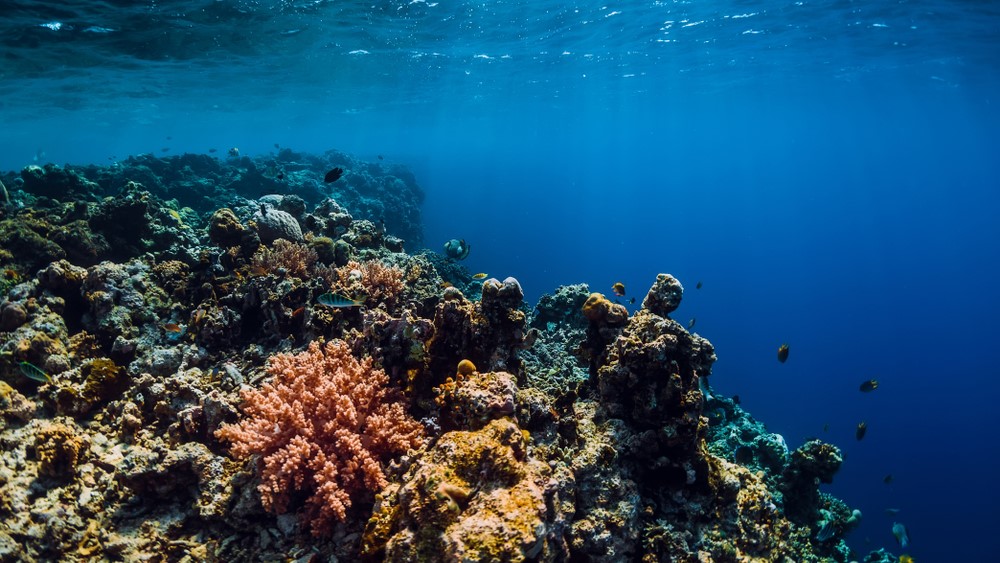Honeymooring is an environmentally friendly mooring solution for floating wind farms. The only mooring equipment resting on the seabed is the anchors. The seabed footprint is therefore reduced, and erosion of the seabed is eliminated.
In addition, Honeymooring consists of very little steel compared to most traditional mooring systems. Production and handling of steel contribute to high CO2 emissions. But firstly, what is the big problem with the traditional mooring systems?
Steel chains resting on the seabed
Imagine a floating wind turbine moored with a traditional catenary mooring system. The mooring system is installed so that several hundred meters of each chain rest on the seabed in non-extreme conditions.
It is installed this way to avoid vertical forces on the anchor when the floater experiences extreme offsets and to provide the necessary flexibility of the mooring line. As the floater moves as a result of environmental loading from current, waves, and wind, the chain resting on the seabed will experience lateral movement.
Over time, this will erode the seabed, which in addition to posing a threat to corals and local wildlife may release CO2 into the atmosphere. Not only do the long lengths of chain resting on the seabed cause erosion – but it also represents a challenge in designing the layout of a wind farm. As is known from the oil and gas industry, the seabed is filled with coral reefs and other infrastructure that mooring lines need to be at a safe distance from.
The seabed footprint is reduced to a fraction
With Honeymooring, the only mooring equipment resting on the seabed is the anchors. The seabed footprint is therefore reduced to a fraction of that of a catenary system, and erosion of the seabed is eliminated.
Consider an offshore location with great wind resources that are well suited for a floating wind farm except for one thing: The seabed is densely populated by coral reefs. With a traditional mooring system, the layout of every single line including its anchor has to be carefully planned, analyzed, and installed with very small error tolerances to avoid these.
Expands the possibilities for more wind farms
This drives up the cost and complexity of the wind farm's development and may ultimately mean that the location is deemed unsuitable. With Honeymooring, these challenges are virtually eliminated since the only space required on the seabed is the modest footprint of the anchors.
Due to the characteristics of the system, the system can be installed with more generous tolerances. Altogether, this means that Honeymooring can expand the areas where floating wind farms are deemed feasible, and access locations with complex seabed restrictions without unnecessarily increasing the complexity of the park development.
Greatly reduces CO2 emissions
Depending on where steel is produced, the associated CO2 emissions in kg per ton of steel are in the range of 1000 – 2100. For polyester, on the other hand, the CO2 emissions in kg per ton polyester produced are less than 10. No surprise, the CO2 footprint from producing polyester is smaller than that of producing steel chains due to the amount of energy required.
By estimating the accumulated length of steel chain required to develop a wind farm using catenary moorings and comparing this to the accumulated length of polyester rope and steel mass of buoys in a Honeymooring system for the same field, the conclusion is revealing:
Honeymooring reduces the CO2 emissions from production by at least a factor of 15. And that is for a modest farm with ten floating wind turbines. And moreover, the factor increases further the more units on the farm!
In conclusion, Honeymooring is an environmentally friendly mooring solution. Locally, it causes minimum damage to the seabed ecosystem, and globally, it contributes to reducing the CO2 footprint of setting up a floating offshore wind farm.



.jpg)
